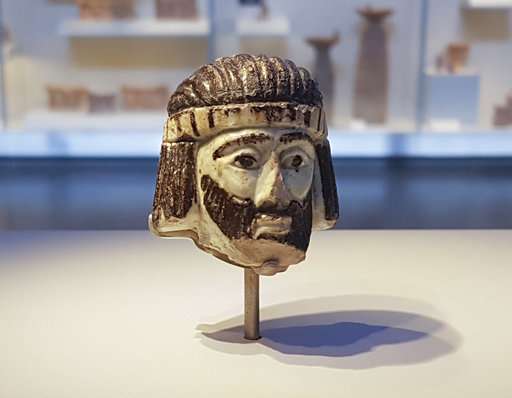Introduction
In a remarkable discovery that enriches our understanding of ancient religious practices, archaeologists have uncovered centuries-old ritual bathing facilities at the sacred sanctuary of Tel Dan Temple in northern Israel. The findings suggest sophisticated Phoenician ritual purification practices conducted by the priestly elite, providing a rare glimpse into the spiritual traditions of early Near Eastern societies. The excavation, led by Dr. Levana Tsfania-Zias, sheds light on the complex and often mysterious religious life of the ancient Kingdom of Israel and its interaction with Phoenician influences.

Unique Bathing Complex Discovered
The excavation team unearthed a distinctive two-stage bathing facility believed to have been used by the sanctuary’s priesthood for ritual cleansing Tel Dan Temple. The bathhouse includes two separate spaces: a yellow-plastered dressing room where priests prepared for the rites, and a blue-plastered basin room where the actual purification likely took place. Unlike the full-immersion mikvah baths known from later Jewish traditions, this structure appears to have employed a standing purification method, utilizing fresh, cold spring water flowing directly from nearby Jordan River outlets.
A Rare Insight into Phoenician-Inspired Rituals
According to Dr. Tsfania-Zias’s report published in Levant, the Tel Dan sanctuary likely incorporated Phoenician religious customs within its ritual structure. These bathing practices suggest a strong cultural exchange between Israelite and Phoenician religious traditions. The use of elaborate color-coded plasterwork indicates not only ritual function but also the high status of the individuals conducting the ceremonies.
The location of Tel Dan, situated strategically at the northern gateway of Israel, was a melting pot of various cultural and spiritual influences throughout its history. The sanctuary served as a spiritual hub attracting both local worshippers and pilgrims from distant lands, as suggested by imported ceramics and multilingual inscriptions uncovered at the site.
Connection to a Mysterious Deity
One of the most intriguing aspects of the Tel Dan sanctuary is the limestone fragment discovered back in 1976, inscribed with Greek and Aramaic text. The inscription references a little-known deity simply referred to as “Dan.” The exact identity of this god remains unclear, reflecting the syncretic and localized nature of Near Eastern city deities during the period. The inscriptions further hint at the city’s broader connections to the larger Phoenician and Hellenistic worlds.

Historical Evolution of the Temple
The original temple complex was constructed on top of a Middle Bronze Age fortification, following the common tripartite temple layout: a porch, central cella (main hall), and adyton (inner sanctum). Following the Seleucid destruction of the original temple, a subsequent temple was built on the same sacred site, continuing the bathing traditions even as religious practices evolved.
Over the centuries, Tel Dan saw multiple phases of occupation and religious significance. After a two-century abandonment, the sanctuary re-emerged during the Middle to Late Roman period. Pilgrims during this phase engaged in purification ceremonies involving the use of primitive clay vessels, often smashed after use—a practice that parallels biblical descriptions of ritual cleansing and purity laws.
Broader Significance of the Discovery
This new find adds to the growing body of evidence demonstrating the complex interaction of cultural and religious traditions in the ancient Levant. Dr. Tsfania-Zias emphasizes that further excavations may yield even more revelations about the worship practices, political dynamics, and spiritual landscape of early Israel and its neighbors. As previous archaeological discoveries have shown, Tel Dan remains one of the most crucial sites for understanding Near Eastern religious evolution.

Archaeologists believe that Phoenician influences extended far into Israelite religious life, especially in sacred spaces like Tel Dan. The ritual baths not only provided physical cleansing but symbolized spiritual readiness, aligning practitioners with divine favor before approaching the sanctuary’s inner sanctum.
The Continuing Mysteries of Tel Dan
While much has been uncovered, many questions remain. What other deities may have been worshipped at this sacred site? Were these practices unique to Tel Dan, or part of a broader Phoenician-Israelite syncretism? The presence of luxury items, foreign ceramics, and multilingual inscriptions suggests a vibrant and diverse community participating in ritual life at the sanctuary.
Ongoing excavations aim to reveal more about these ancient practices. As Dr. Tsfania-Zias concludes, “Tel Dan remains a key to unlocking the shared spiritual heritage of the ancient Levant and offers a rare, tangible connection to early ritual traditions that shaped biblical narratives.”

Conclusion
The discovery of the Tel Dan ritual bathing complex not only highlights the region’s rich religious history but also provides a unique glimpse into ancient purification traditions that predate much of what is commonly known about Israelite religious practices. The blending of Phoenician, Israelite, and later Hellenistic influences makes Tel Dan one of the most important archaeological sites for understanding the dynamic spiritual landscape of the ancient Near East.









